A range of factors can influence neuromuscular blockade (NMB) recovery, making it difficult to know who may experience rNMB:
Age 3,5-8
Increased incidence in older patients
Gender 7
Increased incidence in females
Weight 2,8
Increased incidence with higher body weight and BMI (body mass index)
Comorbidities 3,8,9
Increased incidence in patients with sleep apnea, neuromuscular disorders, renal or liver dysfunction, and cardiovascular disease
Drug-related Factors 3
Medications that affect neuromuscular transmission (eg, anti-seizure medications)
Anesthesia-related Factors 3,7,8
Duration of anesthesia, type and dose of NMB agent administered, number of muscle relaxants (1 vs. 2 or more), and depth of NMB maintained
Some studies show that residual block can occur in more than 50% of patients at extubation or upon PACU arrival.2,8,11
rNMB Challenges
CLINICAL CONSIDERATIONS TO
BE AWARE OF
Consider the following information.
Signs and symptoms of rNMB may include:13

Visual disturbances

Difficulty swallowing
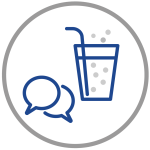
Difficulty speaking or drinking
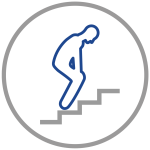
Generalized muscle weakness
Clinical consequences of rNMB may include:
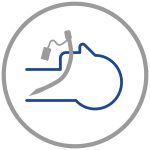
Reintubation in the PACU 14

Critical respiratory events, including respiratory failure and severe hypoxemia 12, 14
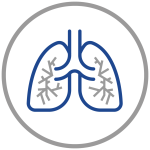
Pulmonary complications, including pneumonia 13
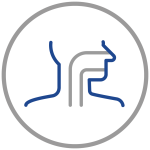
Impairment of upper esophageal and pharyngeal muscles 13
The 2018 Enhanced Recovery After Surgery (ERAS) guidelines state that reversal of NMB to a TOF ratio of ≥0.9 is important to avoid rNMB.15
Addressing rNMB
UTILIZING NMB MONITORING
TECHNIQUES
Optimal monitoring requires a combination of subjective and objective techniques to achieve recovery from NMB.16
Explore each technique to learn about options for monitoring recovery.
Subjective observations include sustained eye opening, arm lift to the opposite shoulder, sustained leg lift for 5 seconds, and/or sustained head lift for 5 seconds.16
A 5-second head lift may be only 50% accurate at predicting recovery from NMB17. 5-second head lifts can occur at a TOF ratio of 0.7, which is lower than the generally accepted threshold for recovery from NMB (TOF ratio ≥0.9).15,16
Many subjective tests are inadequate as a measure of recovery from NMB, as they can be completed at train-of-four (TOF) levels <0.9.1,18,19
Incorporating objective monitoring techniques (eg, measuring and analyzing a TOF ratio in real time) is a way to ensure your patients have reached a TOF ratio ≥0.9.15,18,20
2023 American Society of Anesthesiologists (ASA) Practice Guidelines include: when neuromuscular blocking drugs are administered, ASA recommends against clinical assessment alone to avoid residual neuromuscular blockade, due to the insensitivity of the assessment.21
Monitoring Train-of-Four (TOF) Ratio
Learn from expert Glenn S. Murphy, MD.
Guidelines
SOCIETIES AND CLINICAL
PRACTICE GUIDELINES SUPPORT
MONITORING OF NMB
Selected resources regarding NMB Monitoring.
American Society of Anesthesiologists (ASA)
- When neuromuscular blocking drugs are administered, ASA recommends against clinical assessment alone to avoid residual neuromuscular blockade, due to the insensitivity of the assessment.
- ASA recommends quantitative monitoring over qualitative assessment to avoid residual neuromuscular blockade.
- When using quantitative monitoring, ASA recommends confirming a train-of-four ratio greater than or equal to 0.9 before extubation.
American Association of Nurse Anesthetists (AANA)
Enhanced Recovery After Surgery (ERAS) Society
- Neuromuscular monitoring should be a standard of care. ERAS recommends objective monitoring with a goal TOF ratio of 0.9 to help avoid residual paralysis from NMB.
GET MORE INFORMATION: An option to help manage NMB
recovery.
You will be prompted to leave this site.
Glossary / Abbreviations
BMI=Body Mass Index
ERAS=Enhanced Recovery After Surgery
NMB=Neuromuscular blockade
Objective monitoring=The use of recording equipment to evaluate
recovery from NMB16
PACU=Post-Anesthesia Care Unit
Recovery from NMB=Generally accepted as recovery to a TOF ratio ≥0.916
rNMB=Residual neuromuscular block
Subjective monitoring=The use of clinical observations to evaluate recovery from NMB16
Train-of-four (TOF) ratio=A series of 4 supramaximal stimuli administered to a peripheral motor nerve, used to measure the fade in response between the first and fourth muscle twitch16
References: 1. Hernandez-Torres V, Renew JR. Curr Anesthesiol Rep. 2020;10:117-122.doi:10.1007/s40140-020-00391-9. 2. Saager L, Maiese EM, Bash LD, et al. J Clin Anesth. 2019;55:33-41.doi:10.1016/j.jclinane.2018.12.042. 3. Murphy G, de Boer H, Eriksson LI, et al. Reversal (antagonism) of neuromuscular blockade. In: Gropper MA, Cohen NH, Eriksson LI, eds. Miller’s Anesthesia. 9th ed. Elsevier;2020:832-864. 4. Wilson J, Collins AS, Rowan BO. Crit Care Nurse. 2012;32(3):e1-e9. 5. Murphy GS et al. Anesthesiology. 2015;123(6):1322-1336. 6. Stewart PA et al. Anesth Analg. 2016;123(4):859-868. 7. Aytac I et al. Braz J Anesthesiol. 2016;66(1):55-62. 8. Yu B et al. Curr Med Res Opin. 2016;32(1):1-9. 9. Rodney G et al. Anaesthesia. 2015;70(10):1105-1109. 10. Murphy GS, Szokol JW, Avram MJ, et al. lntraoperative acceleromyography monitoring reduces symptoms of muscle weakness and improves quality of recovery in the early postoperative period. Anesthesiology. 2011; 115(5):946-954. 11. Thilen SR, Hansen BE, Ramaiah R, et al. lntraoperative neuromuscular monitoring site and residual paralysis. Anesthesiology. 2012; 117(5):964-972. 12. Norton M, Xara D, Parente D, et al. Residual neuromuscular block as a risk factor for critical respiratory events in the post anesthesia care unit. Rev Esp Anestesiol Reanim. 2013;60(4):190-196. 13. Murphy GS, Brull SJ. Anesth Analg. 2010;111(1):120-128. doi:10.1213/ANE.0b013e3181da832d. 14. Murphy GS, Szokol JW, Marymont JH, et al. Anesth Analg. 2008;107(1):130-137. doi:10.1213ane.0b013e31816d1268. 15. Gustafsson UO, Scott MJ, Hubner M, et al. Guidelines for perioperative care in elective colorectal surgery: Enhanced Recovery After Surgery (ERAS) Society recommendations: 2018. World J Surg. 2019;43(3):659-695. 16. Claudius C, Fuchs-Buder T. Neuromuscular monitoring. In: Gropper MA, Cohen NH, Eriksson LI, eds. Miller’s Anesthesia. 9th ed. Elsevier; 2020:1354-1372. 17. Cammu G, De Witte J, De Veylder J, et al. Postoperative residual paralysis in outpatients versus inpatients. Anesth Analg. 2006;102(2):426-429. 18. Naguib M, Brull SJ, Kopman AF, et al. Anesth Analg.2018;127(1):71-80.doi:10.1213/ANE.0000000000002670. 19. Donati F. Can J Anaesth. 2013;60(7):714-729. doi:10.1007/s12630-013-9932-8. 20. Domenech G, Kampel MA, Garcia Guzzo ME, et al. BMC Anesthesiol. 2019;19(1):143. doi:10.1186/s12871-019-0817-4. 21. Thilen SR, Weigel WA, Todd MM. 2023 American Society of Anesthesiologists Practice Guidelines for Monitoring and Antagonism of Neuromuscular Blockade: A Report by the American Society of Anesthesiologists Task Force on Neuromuscular Blockade. Anesthesiology. 2023;138(1):13-41. 22. American Association of Nurse Anesthetists. American Association of Nurse Anesthetists website. https://issuu.com/aanapublishing/docs/standards_for_nurse_anesthesia_practice_2.23?fr=sOGNhNjU2NDAxMjU. Published 2019. Accessed November 13, 2024.

